Why South India is Different & Culturally Rich
South India is a beautiful and diverse area with various cultures. Despite the diversity, the phrase ‘South Indian’ is universally used to group everyone from this region.
Several factors attribute to this term. One would be the languages that are predominately spoken or are official in this region. They fall under the Dravidian language.
Amongst the eighty language varieties are Tamil, Telugu, Kannada, Malayalam and Tulu. This sometimes blurs such a diverse landscape into one common ‘South Indian’ term.
Another factor is that a lot of people equate ‘South Indian’ to the Tamil people and their language.
This overlooks other ethnicities such as Telugus, Kannadigas, Malayalis and Tuluvas.
Additionally, the ‘South Indian’ phrase and stereotype have been reinforced by Bollywood to tiresome effect.
However, that is slowly changing through the surge in popularity of Tamil, Telugu and Malayalam films in modern cinema.
Having said that, the problem of grouping everyone as ‘South Indian’ still exists in public spheres.
South India consists of five states and two union territories.
They are the states of Tamil Nadu, Andhra Pradesh, Kerala, Karnataka, Telangana as well as the union territories of Puducherry and Lakshadweep.
To contrast the vagueness of the ‘South Indian’ phrase, we will showcase the different states and their demographics, geography, distinct cultures, and festivals.
Tamil Nadu
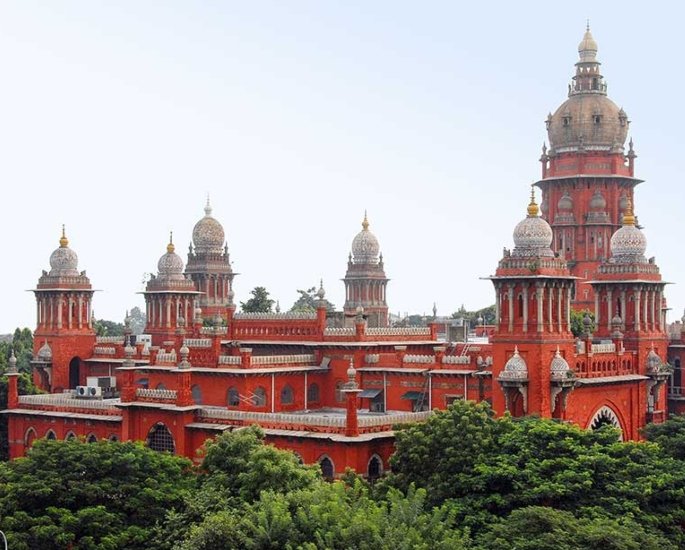

Perhaps the most recognisable South Indian state, Tamil Nadu (meaning the land of Tamil) is located in Southeast India.
It borders Kerala to the west, Andhra Pradesh to the north and Karnataka to the northwest. The capital city of Tamil Nadu is Chennai (formerly known as Madras).
Chennai is known as the “gateway to South India” and according to Euromonitor International, it was the 36th most visited city in 2019.
The population of Tamil Nadu is roughly 72 million, which makes it the sixth most populated state in India.
Additionally, the official language of Tamil Nadu is Tamil, as well as English.
Other languages such as Telugu, Kannada, Urdu, Malayalam, Gujarati and Marwari are also spoken in the state.
The Cultural Richness of Tamil Nadu
What makes Tamil Nadu and the Tamil people’s culture distinct? Well, there are many festivals and practices within the area, which are symbolic of the Desi vibrancy.
Tamil Nadu is home to Jallikattu, which is a famous bull-taming event practised during the Pongal festival.
This cultural festivity was allegedly practised during what is known as the ‘Tamil Classical Period’ between 600 BCE – 300 CE.
Evidently, the engaging contest has been around for some time, which highlights its historical value.
The cultural event is famous in Alanganallur, situated in Southern Tamil Nadu where Jallikattu unfolds.
Despite calls to ban Jallikattu, it is regularly celebrated in Tamil Nadu, especially during Pongal.
Pongal or Thai Pongal is a harvest festival celebrated by Indians, Sri Lankans, Malaysians and Tamils.
The festival commences during the Tamil solar calendar, which is commonly around the start of January.
Pongal has some similarities with other harvest festivals such as Makar Sankranti, Lohri and Maghi, which are popular throughout India.
Pongal generally goes through these four stages:
- Bhogi Pongal – a day of cleaning and discarding old belonging to signify a fresh start.
- Surya Pongal – the honouring of the Sun deity.
- Mattu Pongal – a day worshipping cattle to celebrate all the work they do ploughing the land.
- Kanum Pongal – the final day is dedicated to appreciating the ties of family and community.
During Pongal, the dish that is commonly served is Pongal itself. This is a rice dish that can be made sweet or savoury.
Vegetable-based curries, vada (fried snack) and the sweet dish payasam are also common during the festivities.
The core reason for celebrating this occasion is to commemorate the sun for giving life to harvest and subsequent prosperity.
Another festival that is popular in Tamil Nadu is called Karthika Deepam (known as Festival of Lights).
The celebration usually falls in November and December depending on ‘karthika pournami’ (full moon).
Karthika Deepam is usually marked with clay oil lamps, which are lit in every household.
The festival is famous in the city of Tiruvannamalai, situated in Northern Tamil Nadu.
Tens of thousands of people visit the famous Tiruvannaamalai Shiva Temple to observe the spectacle and pray.
Apart from these festivals, the South Indian state also celebrate the following:
- Diwali (Deepavali) – another festival of lights celebrated across India.
- Tamil Puthandu (Tamil New Year) – this usually falls in April and marks the first day of the Ancient Tamil calendar.
- Thaipusam – occurring every January, Thaipusam celebrates the victory of good over evil.
The South Indian state is also home to Bharatanatyam, a classical form of dance that is performed at many events and temples across the state.
Also, Tamil Nadu is filled with Tamil Dravidian style temples. The architecture is uniquely designed with detailed sculptures, a large range of inscriptions and tall Gopuram buildings.
Another key component of this region is the Thanjavur painting art form.
This style of painting originated in the city of Thanjavur and is characterised by stark colours, gold foils and rare materials such as gems.
They are usually created on wooden planks, depicting glory and holiness. Interestingly, Tamil Nadu is home to the Tamil cinema industry, Kollywood.
Kollywood is one of the biggest film industries in India. It has seen an increase in overseas popularity in places such as Malaysia, Japan and North America.
With such a booming culture, Tamil Nadu remains such a vivid and festive region within South India.
Kerala


This South Indian state is nicknamed “God’s own country” and is situated in Southwest India, bordering Tamil Nadu to the east and Karnataka to the north.
The capital city of Kerala is Thiruvananthapuram. This is a beautiful city located in Southern Kerala.
The area’s population is over a staggering 33 million, making it the 13th most populated state in India.
The official language of Kerala is Malayalam, which the majority speaks. Although, other languages such as Tamil, Kannada, Tulu and Urdu are also spoken in the state.
The Festivities of Kerala
The people of Kerala are generally called Keralites and/or Malayalis. As previously stated, Kerala is nicknamed “God’s own country” and is a South Indian paradise.
Why? Well, the state is brimming with amazing beaches, picturesque backwaters and a lush landscape that is perfect for backpacking.
The cultural element of Kerala is different as it is a concoction of different values, ideas and practices.
There is a combination of Malayalam, Dravidian, Arab and European cultures, which form the bedrock of this South Indian state.
For example, Kerala celebrates Onam, which is a harvest festival exclusively celebrated in the region. Onam is enjoyed by a wide variety of people, adding to its popularity.
The festival is celebrated through multiple days that include iconic events such as:
- Athachamayam – this is a large-scale parade with decorated elephants, traditional folk music, drums, dance numbers and people dressed in extravagant masks.
- Pookkalam (Flower Rangoli) – artistic creations using real flowers that are placed around the house.
- Traditional dances – beautiful routines include Thiruvathira Kali, Kathakali, Kummaattikali and PuliKali (tiger dance).
- Vallam Kali (snake boat race) – men and women compete in this boat race using massive snake-shaped canoes.
- Onam Sadya – the final procession of the festival, showcasing the colourful vibe of Onam using cuisine. Almost every dish is made from harvested vegetables and is served on a banana leaf.
This spectacle happens across Kerala. Hence, there is no chance of missing the festivity when visiting the South Indian state during Onam.
Other festivals celebrated in this South Indian area are:
- Thrissur Pooram – occurring in the Vadakkunnathan Temple in the city of Thrissur, this is when the Pooram star aligns with the moon during the ancient Malayalam calendar.
- Vishu – this is part of the Malayalam New Year and marks the first day of the calendar.
- Thiruvathira – a dance festival that occurs every winter and consists entirely of women who dance in perfect sync.
- Theyyam Festival – a fascinating dance ritual celebrated at night where people dress up in colourful masks and dance to commemorate ancient spirits.
Speaking on the Theyyam Festival and its sights, one person on TripAdvisor commented:
“The make-up is very intricate and beautiful. The attire, makeup and dance of Theyyam is a beholding sight.
“Everything on your mind will vanish at the sight of Theyyam.”
The countless festivities, celebrations and values of the region highlight why Kerala continues to be a focal point of South India.
Telangana
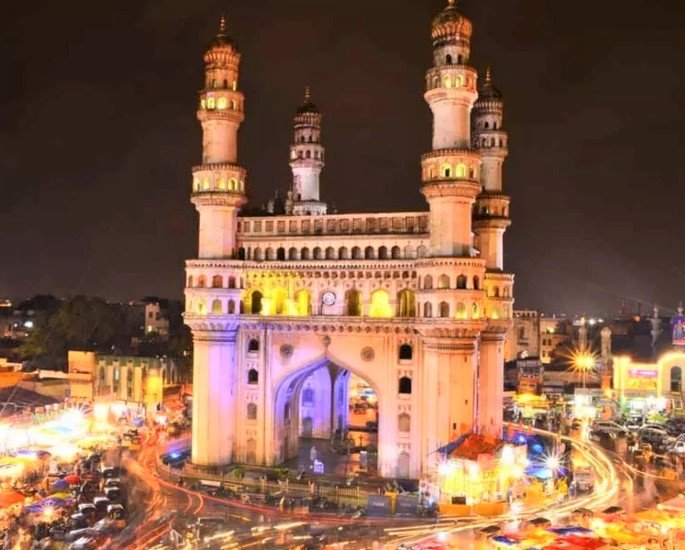

Telangana is a South Indian state, which was formed in 2014. It was within Andhra Pradesh before a Telangana movement ensured a formal creation in 2014.
The state is situated in South Central India, bordering Maharashtra and Chhattisgarh to the north, Karnataka to the west and Andhra Pradesh to the east.
Telangana’s population is over 34 million and the capital, Hyderabad, is a sprawling megacity at the heart of the state.
The official languages of Telangana are Telugu and Urdu with noticeable Hindi, Marathi, and Kannada speakers also in the area.
The Telangana Celebrations
The culture of Telangana is fascinating as it mixes Telugu, Persian, Mughal and Arab ideals.
Such variety is a result of various empires with the most noticeable one being the Mughal empire implementing their customs. This is seen in the cuisine and cultural festivals existent in the region.
The cuisine of Telangana is a fusion between native Telugu, Arabic, Turkish and Persian flavours. Thus, the wide range of flavourful dishes.
The Hyderabadi haleem and Hyderabadi biryani are examples of heart-warming textures and spices.
The brash festivals of Telangana showcase the ethnic diversity that this South Indian state celebrates, such as:
- Ugadi – Ugadi marks the start of the auspicious Telugu new year where families have grand celebrations that celebrate the complexity of life.
- Peerla Panduga – this is an important festival celebrated by most of the population where people visit Sufi shrines to mourn the death of Husayn ibn Ali.
Telangana is a region that has similarities as well as differences in comparison to other South Indian states.
The cultural diversity and numerous celebrations of Telangana are what make it so special and a vibrant hub in South India.
Andhra Pradesh


Andhra Pradesh is located in Southeast India. It borders Tamil Nadu to the south, Odisha, Telangana and Chhattisgarh to the north and Karnataka to the west.
The population of the area is over 49 million, making it the 10th most populated state in India.
The capital city is Amaravati. It is known for its monasteries and university that attracts students from throughout India and South East Asia.
The official language of Andhra Pradesh is Telugu with Urdu, Tamil, Odia, Kannada and other smaller Dravidian languages also being spoken.
The Divine Nature of Andhra Pradesh
The ambience of Andhra Pradesh is filled with a rich heritage. The state’s national dance is Kuchipudi, an ancient traditional form found in the town of Kuchipudi.
The dance style is rich in impressive footwork, expressive movements and cinematic drama.
It blends tandava and lasya elements and accompanies Carnatic music for a distinct and engaging experience.
Explaining his love for the style, dancer Dilip Diwakar told The Talented Indian in 2022:
“Kuchipudi is relatively a fast-paced dance style, compared to other classical dances.”
“Bringing out the grace and beauty along with the quicksilver footed steps makes Kuchipudi challenging yet mesmerising.
“Kuchipudi has everything that may look similar to other styles – linearity with the aesthetics of side bends, graceful twists and turns, flat-footed steps with sharp and quick flexibility.”
The state also showcases a plethora of Tollywood movies, making it a cinematic focal point that attracts all ages.
The industry has blossomed into a worldwide phenomenon and continues to emphasise the talent of actors like Mahesh Babu and Samantha Ruth Prabhu.
Andhra Pradesh also played a huge role in the Carnatic music movement, with many prolific composers leaving everlasting legacies.
Examples include Tyagaraja, Annamacharya and Bhadrachala Ramadas who redefined this classical genre with their artistic instrumentation.
The South Indian state has its own joyous and cultural festivals, all oozing with unique qualities.
As previously mentioned, Ugadi is a formidable occasion and is celebrated in both Andhra Pradesh and Telangana.
The festival is enjoyed in a grand manner, with massive family celebrations and exquisite vegetarian dishes.
However, what makes it so special in Andhra Pradesh is the famous dishes that are exclusive to the area. One such dish is Ugadi Pachadi.
The dish is a mixture that includes water, mangoes, chilli powder, neem flowers and sugar amongst other ingredients
It has six different tastes that signify life’s complex nature:
- Sweet symbolises happiness in the life of a person, usually using sugar or jaggery.
- Sour indicates the unpleasant nature of a person. This comes in the form of tamarind.
- Pungent equates to the surprises that a person goes through, which comes in the form of mangoes.
- Bitter signifies a person’s sadness, which comes from neem flowers.
- Hot represents anger and frustration, which comes in the form of chilli powder.
- Salty symbolises the element of fear that a person experiences.
Andhra Pradesh is also home to the Rayalaseema Food and Dance Festival, which occurs in October of every year.
The name originates from Rayalaseema, a region in Southern Andhra Pradesh and is held in the city of Chittoor.
The festival is filled with local Telugu cuisine where various artists and dancers entertain those in attendance.
It has become a tourist hotspot with many people coming from all over India and worldwide to try the local delicacies and partake in the performances.
Additionally, the South Indian state is home to the famous Venkateswara Temple located in Tirupati.
The grand temple is one of the richest in the world and attracts millions of pilgrims every year due to its historical and cultural importance.
Some of the other celebrations that occur are:
- Visakha Utsav – this occurs in the city of Visakhapatnam every December. It attracts tens of thousands of people, who come to see the vast cultural elements of Andhra Pradesh.
- Lumbini Festival – a special Buddhist event celebrated every December, showcasing Buddhist culture and traditions.
- Sankranti – an important festival in Andhra Pradesh, dedicated to the solar cycle.
- Tirumala Tirupati Brahmotsavam – a gigantic festival hosted yearly at the Tirumala Venkateshwara Temple for nine enchanting days.
Andhra Pradesh is perhaps sometimes overlooked in comparison to other South Indian states. Yet the state has its own diverse characteristics, which are important for people to know.
Karnataka
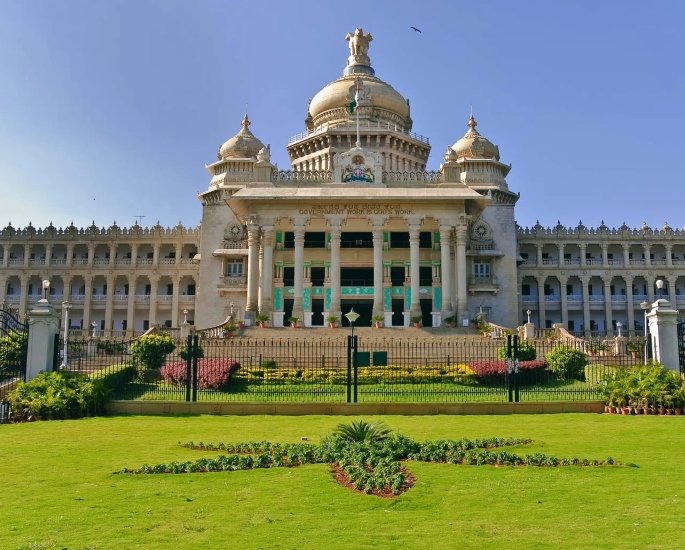

Karnataka is situated in the Southwestern part of India.
The state is bordered by Tamil Nadu and Kerala to the south, Andhra Pradesh to the east, Goa to the west and Maharashtra to the north.
Karnataka’s population is over 60 million, making it the 8th most populated state in India.
The official language of the state is Kannada with Urdu, Telugu, Tamil, Marathi and others being spoken.
The region is home to some of the most beautiful heritage sites and wildlife reserves.
The legendary lost city of Hampi is found here as well as gorgeous scenic destinations like Gokarna beach.
The Intrigue of Karnataka
The culture of Karnataka is rich in history and widely appreciated by the general population.
The South Indian state is home to the Kambala Festival, which is a buffalo racing event that happens in Southern Karnataka. The festival usually occurs from November to March.
The birth of this festival can be attributed to the ancient Hoysala empire.
The Kings of Hoysala had initially created the event to see whether buffalos were adequate for potential battles.
This idea then gradually turned into a sporting event, thus, being kept alive in the modern world. Other festivals which are endemic to this South Indian state are:
- Vijaya Utsava Festival – occurring in Hampi, it celebrates the historic poet Purandaradasa through a myriad of cultural Kannada activities.
- Pattadakal Dance Festival – an annual event in the Pattadakal village. The state-led event showcases amazing dance performances and energetic routines.
- Karnataka Rajyotsava – an event commemorating the birth of Karnataka on November 1, 1956. The event is known as Kannada day and showcases the history of the Kannada people.
Karnataka is definitely an enticing place that is the perfect blend of tradition and beauty.
The Union Territories
Puducherry
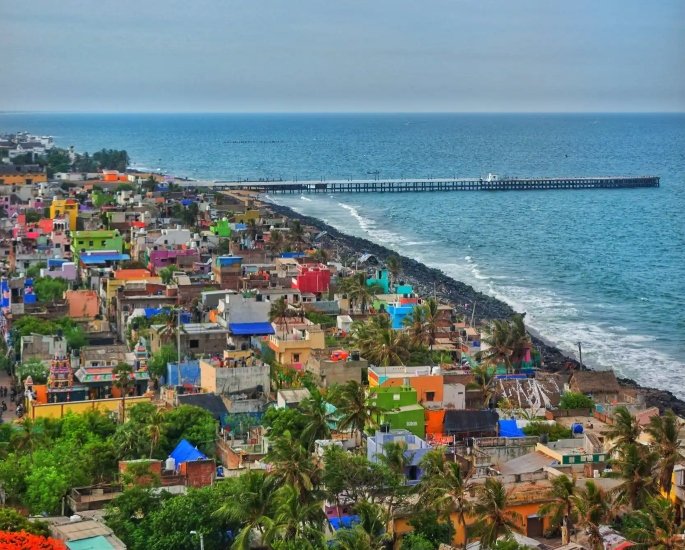

Puducherry is also known as Pondicherry. It is a union territory surrounded on all sides by Tamil Nadu.
The population of Puducherry is over 240,000 and was formed in 1962.
Tamil is the most spoken language in this area, with Malayalam, Telugu, Gujarati, English and French also being prominent.
When looking at the culture of Puducherry, the union territory has a strong Tamil and French influence, which has shaped the area.
Interestingly, Puducherry is the only part of India, which was under French colonial rule.
This influence can be seen in the French style architecture, which dominates the landscape.
Sites such as the Karaikal Church and Immaculate Conception Cathedral are brimming with traditional colours and modern designs.
However, it also has booming beaches and wonderful views surrounding the area.
A culmination of different cultures and religions mean Puducherry is a hub of various festivals, holidays and celebrations.
Puducherry shares similarities with Tamil Nadu in terms of what is celebrated. Holidays such as Christmas and Easter are also enjoyed here due to the vibrant French community.
Lakshadweep
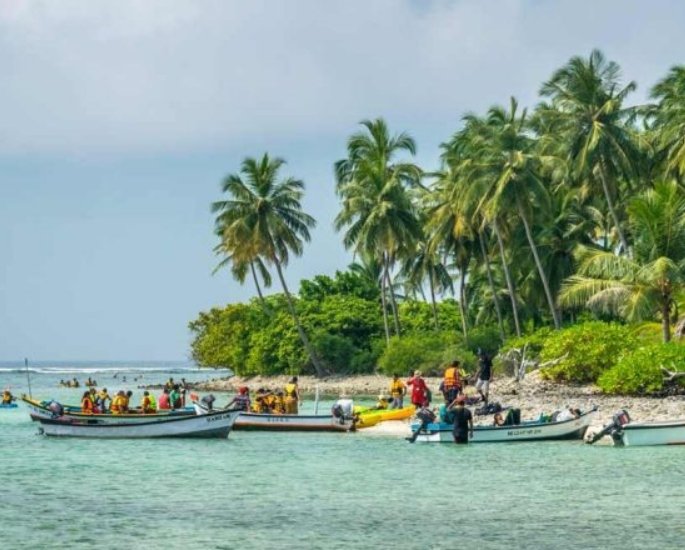

Lakshadweep is the second union territory and is an archipelago located west of Kerala and surrounded by the Arabian and Laccadive sea.
The island harbours over 63,000 people. The official languages are Malayalam and English but Dhivehi (an Indo-Aryan language) is also spoken.
The capital city of Lakshadweep is Kavaratti. This is a city known for its intricate wooden pillars, hand-crafted mosques and gorgeous aquariums.
Culturally, Lakshadweep retains Arabic and Malayalam influences and festivals such as Eid, and Muharram are of massive importance.
Given its location, this stunning area is also famous for its seafood-based cuisine, which attracts many tourists.
Items such as octopus, fish pakora, tikka and prawn biriyani are some of the popular dishes that Lakshadweep has.
Additionally, the territory has two popular folk art forms in Kolkali and Parichakali.
Both are integral parts of Lakshadweep as the dance styles ooze with dramatic sequences and have a resemblance to styles found in North-Eastern India.
Both Puducherry and Lakshadweep offer an array of scenic, energetic and dynamic aspects that make South India even more compelling.
This showcases just how much South India offers in terms of culture, celebrations and values.
Not only do these places highlight the charismatic nature of the Indian region, but also show how vast the ‘South Indian’ remark is.
Labelling someone as just ‘South Indian’ is incredibly vague as South India is so rich with its diverse customs and people.
Yes, the languages stem from the Dravidian language family, but that does not mean the areas in South India are the same.
Therefore, South India should be celebrated in its own right and this deep look into each region shows how potent the massive area is.